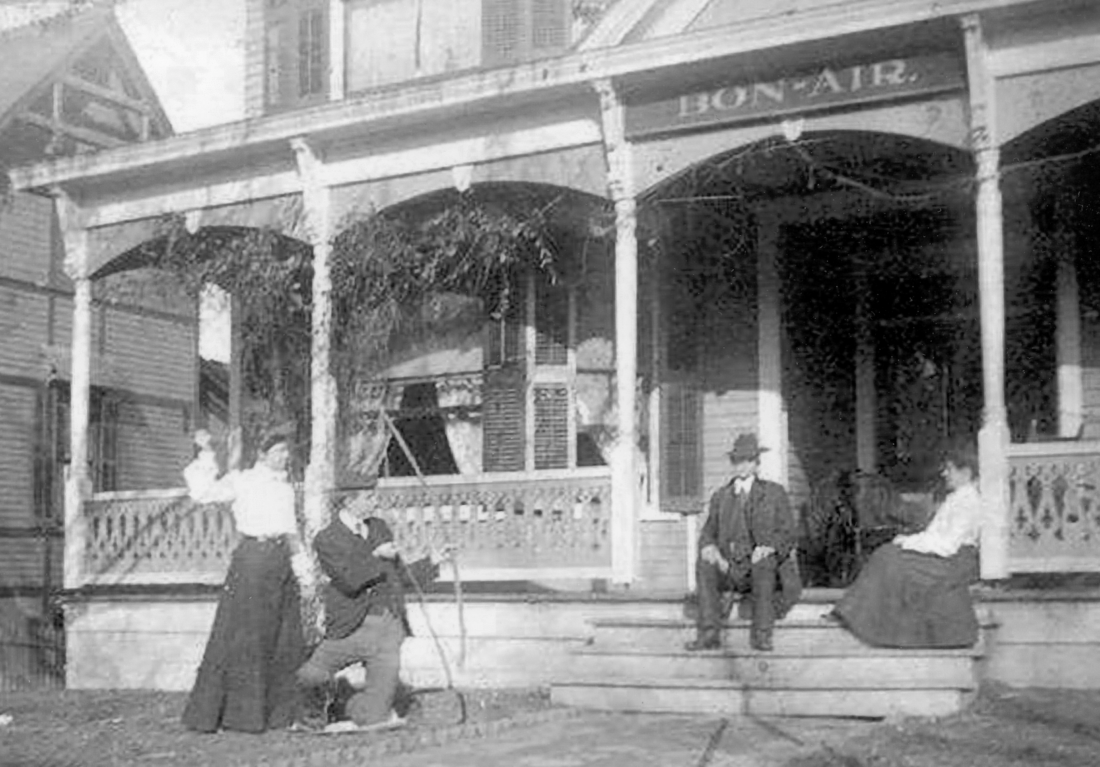A housing shortage was a top concern for many Asheville residents at the start of 1920 — imagine that! But unlike today’s housing issues, the emphasis in 1920 centered on how the scarcity of homes would negatively impact the city’s reputation as a summer resort.
“People will not return season after season if there is no assurance of a place to sleep,” The Asheville Citizen warned in its 1920 New Year’s Day publication. “Let word gradually go out that in summer Asheville is uncomfortably crowded, and Asheville will be condemned through her own negligence to the position of a third rate resort.”
Heeding the warning, the Board of Trade adopted plans on March 4, 1920, to send “the estimated cost of Kiosk shacks … to various boarding houses and others who might be interested in building a number of these small tent-like structures on lawns or suitable lots near places where board can be secured,” the paper reported. “In addition to these, it was suggested that a tent city be formed with larger tents for dining room and recreation and rest centers[;] all such increased housing facilities could have electric lights, water and the usual conveniences.”
An editorial in the March 28, 1920, edition of The Sunday Citizen approved of the measures. The paper also encouraged the city to consider establishing campgrounds, “equipped with tents, provided with good floors and roofs.”
According to the editorial, the Board of Trade had spent $200,000 ($2.736 million in today’s currency) over the previous 10 years to promote Asheville to visitors. The coming summer crowd, the paper continued, promised to break records. But without sufficient housing, The Sunday Citizen warned, “The results will be embarrassing to the city as a tourist resort.”
On June 18, 1920, The Asheville Citizen again reported on the dire need for housing tourists. (At this point, talk of tents and kiosk shacks appear to have dropped from the conversation.) “If all the people are provided with rooms and board, it will be necessary for scores of families to get in touch at once with the Board of Trade and list their rooms and the fact that they can take people for meals,” the paper wrote. “The hotels are already well filled and it will not be possible for them to take any more people than they are now accommodating, during the summer.”
It is unclear what solutions came to bear, but further conversations about housing shortages appear to have dropped as the summer visitors continued to arrive. Instead, the paper boasted about the city’s ongoing success as a resort town. “The summer tourists season is well open now and the city is rapidly filling with thousands of people, not only from practically every state and city in the south, but from many of the eastern and mid-western cities, as well,” The Asheville Citizen wrote on June 21, 1920.
A month later, on July 21, The Asheville Citizen reported on a new proposal to address the city’s future tourism industry needs: a new $1 million hotel project spearheaded by “three northern capitalists.” The paper asserted that the city’s future reputation “as a resort and commercial city” depended on the measure, which received approval that evening.
Early optimism for the project, however, was soon met by the heavy weight of reality. “Hotel accommodations have not increased since last summer,” The Asheville Citizen wrote on April 28, 1921. “Construction of one new hotel has never been started because the instability of prices for labor and materials.”
The editorial concluded, “Asheville must not only plead guilty to parsimony in the budget for advertising itself but it must sorrowfully confess that it is marking time in the fundamental matter of housing.”
Editor’s note: Peculiarities of spelling and punctuation are preserved from the original documents.
This article was updated on Oct. 25, to clarify an excerpt from The Asheville Citizen’s March 5, 1920, reporting.




Thanks for the umpteenth time, Thomas: you always manage to find things in the archives that tell us that nothing is new under the sun.
(I remember looking at the “redlining” maps for Asheville from 1937 that made note of how many houses on or around Merrimon had been bought up as tourist rentals. But the mid-20s was the age of those big downtown hotels — the Asheville-Biltmore, the George Vanderbilt, the Battery Park — and the stalled projects of 1920-21 might have been the ones that were eventually built in downtown.)